#Unity 3D action game
Explore tagged Tumblr posts
Text
Based on the legendary Chinese epic and its modern film adaptations, Monkey King: The Adventure Begins is a cinematic, cross-platform action-fighter that merges story-rich levels with dynamic combat in 3D and Augmented Reality (AR). After a disappointing start with a previous developer, the client entrusted Zatun to take the game to the next level—meeting industry standards in quality and performance. Zatun delivered end-to-end development, including gameplay, AR integration, animation, monetization, and LiveOps. Developed in Unity, the game immerses players in thrilling mobile battles enhanced by special powers, particle FX, and strategy-based scoring.
#Monkey King game#AR mobile game#Unity 3D action game#cinematic action fighter#cross-platform combat game#Monkey King adventure#Zatun game development#AR animation#mobile game with LiveOps#Chinese mythology game
0 notes
Text
youtube
Lets Make Coin Collector Game in Unreal - Part 7 🚀
Learn How to create Moving Platform in Unreal step by step. https://www.youtube.com/watch?v=hvBZEiVL5p0
#gaming#gamingindustry#indiegamedev#gamingcommunity#gamedev#gamingnews#games#gamesindustry#videogame#videogames#videogameindustry#ai#artificialintelligence#animation#3d#indiedev#indiedevs#gamingjobs#indiedeveloper#indiegame#platformer#action#adventure#indiegames#gamedesign#gamedesigner#unity#unity3d#madewithunity#unrealengine
1 note
·
View note
Text
Unlock the Secrets of Wyvia in This Open World 3D Action RPG
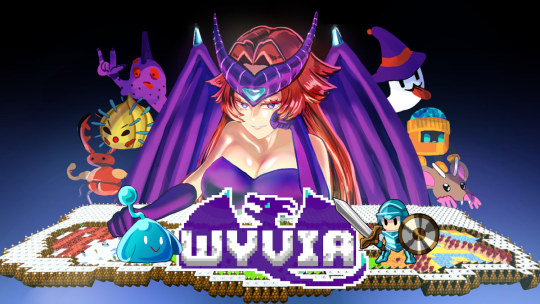
Wyvia open world 3D action RPG game gets into the Autumn Sale with support for Linux and Windows PC. Developer Blast Programming has skillfully crafted an engaging and deep experience, showcasing their creative prowess. Available with a discount on Steam and itch, plus 95% Very Positive reviews. In the world of adventures, Wyvia stands out as an action packed journey. It's an open world 3D action RPG game, where you control a character in a fantasy world, make choices, and battle various enemies. Developed by Blast Programming, the open world 3D action RPG game is available in the Autumn Sale. It's Steam Awards season and that means you can now nominate your favorite Linux titles for all sorts of awards. The Wyvia story takes place in a magical land where creatures called wyverns, once the guardians of this world, have mysteriously vanished. This disappearance has caused chaos, with monsters coming through portals and wreaking havoc. The once peaceful realm is now a battleground, and that's where you come in. You'll step into the shoes of a new recruit in a group of mercenaries. Similar to soldiers for hire who've taken on the task of bringing back peace. Your mission in Wyvia? To figure out why the wyverns have gone and also put an end to the monster invasion. One of the best parts is how you can customize your character. There are 10 different classes, like types of warriors or mages, each with unique abilities. Then mix and match skills from these classes, creating a character that’s uniquely yours. This system lets you experiment and find the style that suits you best.
Wyvia Release Date Trailer
youtube
The land you'll explore is vast and diverse. Picture sunny grasslands, mysterious forests, scorching deserts, and freezing tundras. Since each area has its own challenges and monsters. The world feels alive and full of the unexpected, doing so with dungeons to explore and lost treasures to discover. Wyvia combat is a big highlight. It's designed to be fun and straightforward. Whether you're using a massive axe or casting powerful spells, the fights are thrilling. The focus is on action - getting up close with enemies or attacking from a distance. Due to build up your skills as you go, shaping them to fit how you like to play. A unique twist is that you get to unlock powers similar to the missing wyverns. Such as breathing fire or using powerful claws! This is how Wyvia also adds an extra layer of excitement to your journey. Wyvia is all about diving into a rich, fantasy world, shaping your character, and taking on a grand quest. It's a blend of exploration, strategy, and action, promising hours of entertainment. Whether you're battling through a dungeon or uncovering the secrets of the wyverns, there's always something new around the corner. It's all available on Linux and Windows PC. Priced at $8.99 USD / £7.65 / 8,77€ with a 10% discount in the Autumn Sale on Steam as well as itch.
0 notes
Note
Your game is so cool, I wanna make games myself someday too. Is unity good? I've heard some bad stuff about the CEO...
That depends heavily on what you want to do. Unity is fine, Unreal is fine, Godot is fine, but each has different strengths and weaknesses (another way to phrase it, having used Unity a lot personally and Unreal a lot professionally, would be "Unity is awful and Unreal is also awful, but you can get by in both"). If you want to make a 3D action game, probably learn Unreal; I use Unity for mine because I like writing in C#, but for an absolute beginner, Godot script and Unreal's blueprints are probably both easier to learn. Don't listen to anyone who tells you Unity is somehow easier, the only real strengths it has in a vacuum is much better online documentation, better access to HLSL shader stuff, better version control, and kind of better live coding than Unreal; a lot of stuff that's easy in Unreal takes absolutely forever to do in Unity.
Other tips: Join game jams and work with other people, make friends who do similar things to what you want to do; Don't make the game you really want to do until much later than you think, you will burn out running into issues, make tiny tiny tiny projects first; Learn what sources to trust for input. A lot of unreal tutorials on youtube are really terrible and will teach you bad practices, forums will tend to be better, friends who are already versed in the software are often a much better bet, but don't expect to learn anything without a lot of experimenting first; Don't expect to make any money off it, at least for a long time.
Best of luck
50 notes
·
View notes
Text
Project Squealer BIG REVEAL
Calling all mystery buffs, adventure seekers, and gumshoe wannabes!
I am developing MY OWN INDIE GAME under the working title PROJECT SQUEALER! In this action-packed adventure RPG game, a disease called Laughter Pox has plagued the town, and it's up to three kid detectives to investigate!

These days, I'm mostly known for making mods for The Sims 4, but I've been interested in game development as far back as 2009. In fact, I originally bought The Sims 3 for PC back in 2012 as a tool to plan out characters and worlds, before becoming hooked on the gameplay. For a long time, The Sims was my main creative outlet, but I was still coming up with game ideas in the background.
Skip ahead to mid 2016: while playing with my Go to School mod, I needed to create some child characters to fill the school with. I created two rival teams of kid detectives, and came up backstories and mysteries for them to solve. I ended up liking these characters far more than any other characters I had created. They felt like my creative masterpiece, begging for something bigger than just creations made in a character creator.
That's when "Project Squealer" started brewing in my brain. This indie RPG wasn't just some vague idea; I was developing full-blown stories, environments, and gameplay planned for my kid detectives. I also had the perfect art style in my head. Emphasis on in my head.
Turns out, bringing my dream art style to life was way harder than I thought. So hard, in fact, that I spent the next few years learning how to create art. It took until 2020 to finally have character and environment art that could (almost) pass for pro-level game stuff. Not only that, the project was undergoing what indie devs refer to as scope creep. I kept adding more and more ideas to the design doc, making the game more complex and pushing the release date even further into the future. In 2018, I even decided to move from 2D to 3D, and switched engines from MonoGame to Unity (and later to Unreal Engine 5 in 2023).
Now, it's 2024, and I'm finally, finally ready to announce what I've been working on for the past 6 years!
Project Squealer is the working title for my own indie game about a team of three kid detectives: Orlo (middle), Von (left) and Zoros (right). Together, they go on adventures and solve mysteries… or at least they would, if they weren't constantly having their business stolen by a rival detective team.
In this action-packed adventure game, a mysterious disease known as Laughter Pox has plagued the town, causing people to laugh hysterically. Where is it coming from? How can it be cured? It's up to our detectives to find out! If they can convince others to trust them with such an important mission, that is!
Project Squealer uses a hybrid of 2D and 3D graphics to create a 2D cartoon look with full 3D movement. Characters and some organic objects are 2D sprites that move with the camera. Most environments, objects and buildings are 3D, but have texture-based outlines to give it a 2D look.
The game features a variety of different quests, characters, abilities, enemies, locations, weapons and items. In addition to the main storyline, you can help out NPCs by performing "errands" for them, which will unlock cool rewards and even side missions.
Unlike many RPG games, Project Squealer won't include a character level system, because I want the player to be able to progress using their own skill, not by grinding levels. One of the game's main design philosophies is that there are few, if any, permanent upgrades. Weapons will eventually break, status effects that make your stronger will eventually expire, etc.
Project Squealer is still in relatively early development. I plan to post more information, screenshots, and eventually even videos, as it gets closer to release. Follow my Twitter for quicker updates: https://twitter.com/ZerbuTabek
Your support and feedback is welcome, and will help improve the game!
105 notes
·
View notes
Text
🌧️Spots of Grey🌧️ (02/04/25)
"Every fiber of your being sings with rejection."
To quickly address the date on this post: Weekly updates have been premeditatively scheduled for a month now, so it won't hurt to use the real dates they've been written. You know to expect them every Monday at 12AM EST.
~How many outcomes should exist?~
It's a question that has loomed over me at every turn, despite the answer being absurdly elementary. The only possibilities that exist are the ones introduced—trying to account for any ideas that haven't yet been conceived is nothing but a waste of time and energy. Still, so many hours of careful thought and experimentation are required to create an end result that I can be proud of. It would be too simple to write up a full script on a whim, add a few choices here and there and then dump a half-assed product on you. This game and I deserve far more than that, as well as you. There's a story inside me that is thrashing, kicking, screaming its wishes to be something special. I'm in love with it so badly, I'm willing to forfeit all of my other dreams to give it the best chance possible.
~What is the correct medium?~
ChoiceScript won't always be the program Brain Death is written in, that's for sure. Twine might be the software I turn to after this build, but with that I'll need to determine which format to use in tandem. Hell, maybe I'll throw caution to the wind and learn 3d modeling. Time will tell, so long as my heart continues to beat and my love keeps blooming. I should hate every moment of this after months of failure, rinsing and switching and repeating the process of writing and deleting and rewriting. Yet somehow each time, I feel a bit closer. I want to breathe life into my characters and create an environment equal parts immersive and interesting; to give the choice to engage in meaningful conversations that fit like a perfect glove. How do you appear, what is your identity, and which parts were you born with? How does the past align with the present? When did the change become visible? Have you changed, or are you the same? You should be seen as you are, treated in accordance with the views of the people around you. How will their mood shape their words? In what ways will they perceive you? Will those perceptions be altered or strengthened with your actions? And what about your own?
~Simultaneously overwhelming and thrilling...~
Only a genius could efficiently figure out the answers to all these questions, while also deciding on the wordings of choices, the outcomes, consequences etc. I'm the furthest thing from a genius. I'm a mentally disabled high-school dropout, whose every project to date has either come out half-baked or scrapped entirely before release. My 24th birthday is coming up in a couple months, too. All in all, these past few days, I've thrown a lot of my work to the abyss and shuffled events to hopefully make transitions more fluid. Currently, Chapter 1 is slated to be called Happy Unity, and will likely be around 10k words when it is complete. Including the Prologue, the first demo will maybe be around 10k to 15k words including code. (Feels weird for it to still be so up in the air after everything, but as I've said in an earlier post, I tried really hard to make the old intro work for a really long time. It didn't reflect my vision well enough.) Act I will be the shortest Act in the game (the 1st of 4), including only the Prologue and Chapter 1. Act II's demo build will possibly be made in Twine. As of now, what's in the game is almost 10k with code, but some text is set to be replaced or taken away completely. (Update 06/04): I've just finished penning a summarized script for Chapter 1—as well as a sheet for a new central character—and while I think there're some minor kinks to be worked out, it looks promising. In just a few days, I'll probably hunker down and begin writing everything down in ChoiceScript. I'd wanted this to be done in July for lore-sake, but if it's done sooner I will upload it then and there. Don't get your hopes up, though.
💧Please, Hydrate.💧
#if wip#choices matter#interactive fiction#interactive story#braindeathif#braindeathaoe#brain death - an oracle's end
8 notes
·
View notes
Text
Farm sim update time, I missed a few posts cuz I've been busy/ I was working on was backend code stuff and that's not interesting to look at.
For the last month or so, I focused on making my player's model, so I could make animations for actual visual feedback and also so I'd have something prettier to show off than just placeholder assets.
Here she is!! (excuse the halfassed lighting)
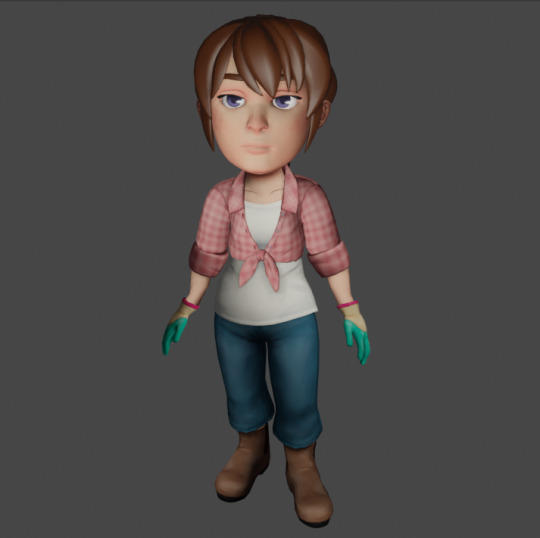
I forgot how much I enjoy the 3D art process, especially all the parts most people find tedious (like UVing, rigging, weight painting). I used Substance Painter for the first time to do the texturing and that was a lot of fun too.
And here she is running around in game.
I haven't properly worked with 3D in Unity before so I was surprised that I got this to work with little to no problems. Tho the animations are kinda jank atm, cuz I just downloaded some from Mixamo for testing purposes, but I'm so happy about getting her braid to animate dynamically!!
Next step is figuring out how to implement swapping models so the player can customise their appearance. I need to make some custom animations for the other tool actions as well, and I should probably design and model some tools so I'm not using random placeholders
#game development#indie dev#story of seasons#harvest moon#devlog#yoru tries to make games#original the farm sim#original the characters do not steal
9 notes
·
View notes
Text
Dev Log 6/6/25
Let's start with Thursday. Thursday I spent about 4ish hours working on the Minesweeper AI with ChatGPT. The program creates a board, prints the board, and can change the information on the board (only randomly right now). The AI at the moment is entirely random and the rules of the game are yet to be put in however we are able to simulate the start and end of a game alongside the process of selecting cells.
Today, I worked on my portfolio website. It's still not done, but I made some serious headway today. Today's main goal was getting images displayed where originally I only explained the game. Now there are title screen images that link to the details of the game. Next time, I will add details about what I did on each game. I also plan to add two more projects that are currently not listed.
For a quick list of all games I have worked on
+ Sole Survivor - a zombie shooter/escape game where you must repair your escape vehicle before you can leave the map. The game was made using Unity and C# programming alongside Unity's built in library.
+ Julien Jumper - A vertical platforming game that is bare bones as can be. The game was made using only the DX11 API for graphics and Git for version control.
+ MegaDude - It's pretty obvious what this was based on, this game was a side scrolling megaman clone. As is with Unreal we had a difficult time building a 2D game in a 3D environment but we succeeded, even got wall jumping. This was a game made using UE5.2 and Unreal's C++ library. For version control we used Git which was a problem for a while, we didn't find the .gitignore until day 3.
+ Noble Roots - the only game that I worked that did not finish development. We wanted but all the team members moved on after school wrapped up. For this game we were making a sprite based farm/life sim.
Next week all of these projects should be available on the website but for today, it looks like this.

The full changes are in the git repo: https://github.com/TyrantofChaos/strangegamedd/commits/main/ for those that want to see it.
Saturday/Sunday
Honkai Star Rail and Trails through Daybreak updates on https://www.tumblr.com/tyranochaos?source=share
Monday
My Birthday; still going to work on Python studies + HackerRank + Minesweeper AI
Tuesday
Project Valkyrie
+ Mouse Controls + Text Boxes + Design Change from Turn Based to Action Game
Wednesday
Midweek update blog
2 notes
·
View notes
Text
ManaPost 18 - The Return!
Hi. It's Y. ...Has it been over a year since the last you've heard from us? ...Yes. If you haven't joined our discord server, that is. (Shameless plug) I realized over that time that I really do a lot better without the pressure of making something presentable so quickly! I've been doing a lot of work on Manaport this whole time, and I'm very excited to share it all with you! So... Enough with the serious greeting! This is the 18th ManaPost, and it's stuffed full of nerdy stuff I've been waiting to show off! I'm happy to be back! :D
Switch 2 Godot or Something
Of course, as we explained in ManaPost 14... A majority of our efforts in Manaport's development around the end of 2023 was dedicated to essentially translating Unity scripts (usually C#) to Godot (usually gdscript). This took a lot of time (especially for a rather novice programmer such as myself...) Rewriting what we had in Unity took a good few months alone. Combine this with my last year of high school and burnout... The first iteration of our port to Godot took quite a while.
"First" Implies a List...
...Let me tell you a bit about Manaport's rather turbulent development over the past... Almost 5 years. Manaport started development on the 25th of May, smack-dab in the middle of the 2020 pandemic as an idea I had to take my mind off of the woes of staying in my room all day. I gathered a few of my friends and we started throwing ideas at each other.
youtube
This was the culmination of our efforts! I didn't even code this. I had no idea how to code. I had only done the spritework. Manaport originally started as... A Sidescrolling RPG. It was so cool to me to see an idea that I had come to life. I had spent a lot of my childhood making stuff in games like LittleBigPlanet, always wanting my next project to be my next magnum opus or whatever. I dream big, if that wasn't obvious.
youtube
This was... after I got my hands on actual programming for the first time. Manaport was now a proper traditional Action RPG. I remember trying to sort through every little bug I found... Giving up practically hundreds of times only to remember how stubborn I am and just keep trying. We had restarted once before this video, however there is a distinct lack in media from that era, unfortunately.
youtube
youtube
This... This era felt like the start of something proper. I was proud of this title sequence alone, and there was practically no game behind it! I had coded a lot of the stuff from this era myself, and it was the subject of my high school computer science final exam, actually. I did pretty well on that.
Three Dimensional!
Starting from the first ManaPost EVER is the start of Manaport's journey as a 3D RPG. Now... you may have noticed that we've definitely changed the definition of Manaport as a game over the years. Started as a Sidescrolling Turn-Based RPG, then a Top-Down Action RPG, then a 3D Action RPG... What's another change, right?
Fourth Time's the Charm!
This will hopefully solidify this era of Manaport as the last one. Development may be turbulent, but... I've learned not to set expectations. I do this for fun! It's fun to make stuff and see what sticks. Without further delay... Here's a compilation of my work on Manaport from just this month alone. On the Manaport Github repository... you can actually see how much work I've been putting into the game in this stage. Of course... a lot of this stuff is quite technical, so here's the first major change.
Try Taking Turns; Sharing is Caring!
Manaport has returned to its roots as a Turn-Based RPG! Hopefully for the final time... We ultimately decided that Manaport would be better off doing away with all of the feature creep that unfortunately claimed us for the last couple of years... When I, Y, first came up with Manaport, when it was just a little idea in my tiny brain... I wanted it to be a fun, story rich Turn-Based RPG, something akin to Paper Mario and the like. It's been almost like some kind of nostalgia trip going through old ideas I had and applying them with this new knowledge I have about games. I started off by playing a bunch of games that have been on my radar... Honkai: Star Rail, Persona 5, Undertale (if you can believe I haven't even finished the game yet...), heck, even a bit of the Paper Mario series. I wrote a bunch of stuff down, drew up a bunch of design documents, and got to work! This was the first time that I felt like I was doing game development the right way. I always felt like I was sort of... mashing stuff together without any kind of method to the madness, but with 5 years of (hobby) experience behind me, I could properly see what the next step was. I've been planning everything out... Consulting friends for their input... Heck, I even built the game a few times to send it to friends for actual playtesting. The first item on the agenda was getting a battle prototype made.
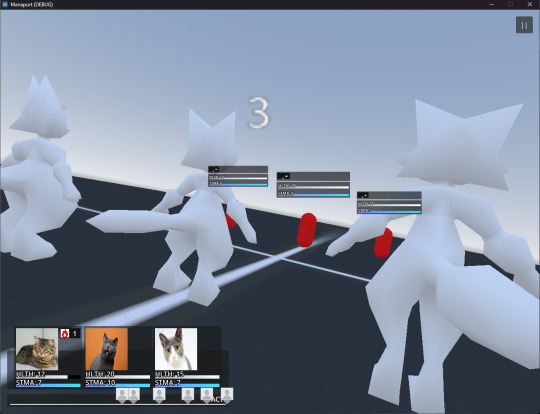


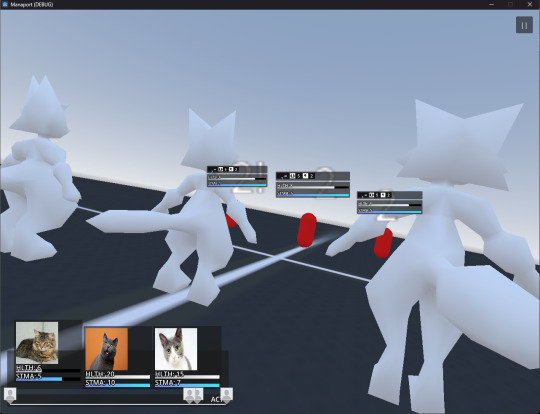
Finishing this part of development alone was a lot more satisfying than I thought it would be! I mean, these are definitely just A-Posing cats and red beans, but this is something magical! I can build off of this, but it still works so well! Not an error in sight! :D This took about... a month start to finish! You could call this a game, I think! It's great! When it comes to combat in Manaport, you can chose your Basic Move, which will likely be a basic attack of sorts... Two Skills, or use an Item. All three of these acts will end your turn, so sometimes you might have to actually choose wisely. One thing I did see in a lot of modern Turn-Based RPGs is an auto mode... I'm still considering adding that, but for now, this is the basics of battling. Kill the red beans... Simple as that! Next up was the Overworld!
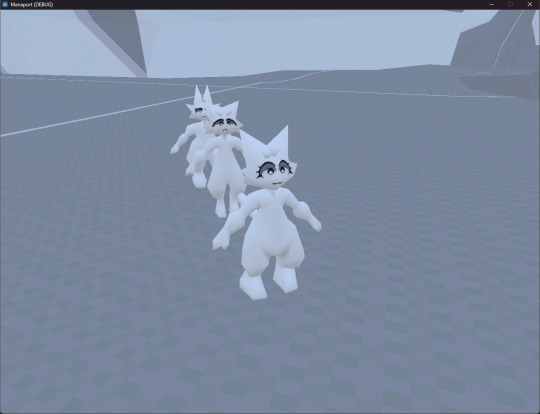



Admittedly, this does look quite rudimentary right now (Mainly because a lot of my work recently has been on bug fixing and refinement), but hey! This is more than impressive to me, and that's what matters! Obviously... in turn based games, the overworld is the space between battles. Nothing major here. You can walk around... with your A-posing trio of feline friends. Oh, and there are Party Formations, essentially defining a way for your party members to follow the leader. With Laurie, they're walkin' single file! With Mirabelle, the others take up a more protective position... And with Winsley, you can find Mirabelle and Laurie standing back. That's it. Not the biggest update, but it gets the job done!
Then... heh. Then was making the game look a little nicer!
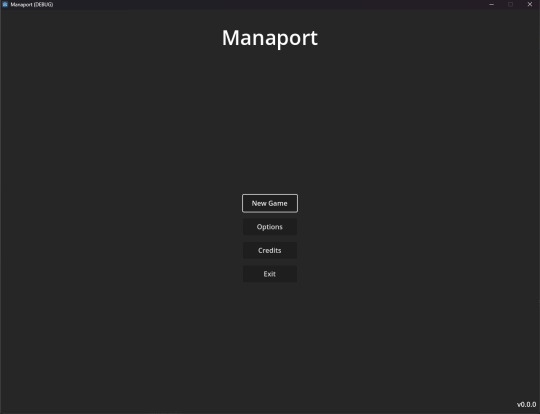





Manaport was foretold to look like a PS1 title... so it's gotta look the part! There's a great deal of new customization options for how crispy crunchy absolutely retro lookin' you want your game! From PS1 resolution and the funky looking affine mapping, to crisp, 1280 by 960 gameplay! Stylish. Slay. So demure, I think.
Thought I Was Dead
In honor of this wonderful update... I have prepared an accompanying Demonstrational Showcase video! Of course... tossing a bunch of pictures in your face is nice, but hey, who wouldn't like watching a short presentation! Pretend I am a small child... showing you a silly project on my tablet... Hanging this up on my fridge and saying I did a good job.
youtube
And I'm Gone!
Aaaaaand that's it! A short Manaport retrospective... and now a Manaport prospective(?)! This month has been amazing for development, and I can't wait to see what I get done in February! I'm excited to be back sharing my progress updates with you, dear Reader! What I've learned from all this time is that I will no longer overpromise and underdeliver! Expect absolutely nothing from me! But please, do remain support of us in the future. Thank you very much for reading.
Y
#indiegamedev#manapotion#game dev#game development#indie games#indie game#video games#ps1#ps1 aesthetic#ps1 graphics#retro aesthetic#thank you for reading :)#Youtube
4 notes
·
View notes
Text
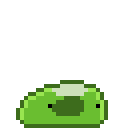

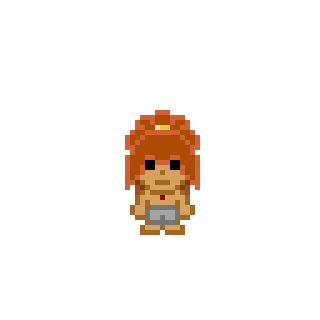
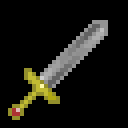
Some early sprites I made during my first attempt at a gameplay tech demo of my game
A top-down action RPG in Unity. Though I still intend to use these sprites, l've since moved to making 3D models and now intend to create my game in Unreal Engine.
Follow, Like, and Share for more on Merchanted, it’s easy and it helps a ton!
#artists on tumblr#indiedev#original art#original character#art news#concept art#digital art#game art#indie games#merchanted#gaming#video games#games#retro aesthetic#retro games#aseprite#retro gaming#solodev
2 notes
·
View notes
Text
Grey labyrinths, ambient
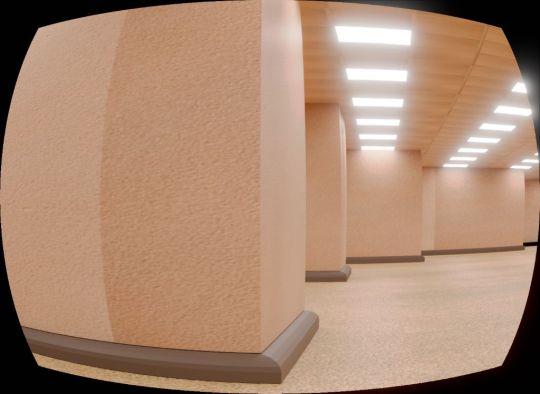
Three dimensional scene for today. By the lessons ai dig. It is backrooms. You are welcome in backrooms. It is labyrinth from same style of rooms. Same walls. Same floor and ceiling. And here lives some creatures. But it is not easy to find them. As a rule, they are hostile. It is backrooms, such internet theme. You can find lessons how to make this thins or watch already made works.
And this is my scene based on this. It is a picture made in blender based on backrooms. Labyrinth. It is possible with VHS effect. I already have in blender a visual and a labyrinth. And this is renders from it. Blender – it is animations and pictures. And it is a model of labyrinth. It can be in three dimensional engine. As Unity. But it is good to have skills. Right now I do not have skills.

Labyrinths are grey colors. With end. With levels. And this is ambient atmosphere. Atmosphere of grey rooms. And repeated. Silence. And with no monsters. Nothing else. Walls. Floor and ceiling. Strange dimensions as in Twin Peaks. But not like that.
Just a pack of three dimensional labyrinths. So, I have in my head idea for a long time about ambient games. As ire member Andy Warhol try to programming. And he try to do something his own, but not like games. But something its own style. And as I heard he badly programmed. So little of result. But I have never seen, only heard about it. And as I get it is idea to simulations of something. I get this way for myself. And this is my three dimensional art. And like unknown strange game. It can be playable. In theory. But I am not sure. Now it is only a pictures in blender.

It is such art style. Art model in blender. Mono colored labyrinth. Arthouse. I think ambient. Only same colored rooms. And small labyrinths. You are walking them with effect of videocam. And that’s all. All this theme in grey labyrinths. You are inside a labyrinth with no meaning. And just walking here as ambient theme. Series of labyrinths for ambient. So, for a long time I have this in my head. But I do not program good. Game with no dynamics. Just walk and collect. So, one of my games - MicroWorm is about this things. But it is 2d. And here it is already a labyrinth. Walking with ambient and it is such style of emptiness. Like nothing. Just walk. There not lots of actions. Explore. Look. Zero dynamic. In a strange place. Like Labyrinth. And nothing. Silence, Or ambient music.
And maybe it is better to try harder and to make a retro vhs shooter. With lots of monsters. And with shooting from some weapons. Second world war or better with automatic guns, machine guns. Automatic guns, machine guns, uzi. And lots of monsters. Maybe this. But it is harder. One more cool theme it is style webpunk 2.0, and I remember some painter draw for some steam game, such a bright, ultra colored colors with radical colors, pictures. And it was a shooter like wolfenstein 3d. And i as impressed a lot.

Dima Link is making retro videogames, apps, a little of music, write stories, and some retro more.
WEBSITE: http://www.dimalink.tv-games.ru/home_eng.html ITCHIO: https://dimalink.itch.io/ GAMEJOLT: https://gamejolt.com/@DimaLink/games
BLOGGER: https://dimalinkeng.blogspot.com/
#3d scene#blender#low poly#backrooms#90s graphics#retro games#labyrinth#rooms#3d render#retro aesthetic#maze#ambinet#webpunk#horror#relax#nothing#just walk#retro 3d
8 notes
·
View notes
Text
Breaking Down the VFX That Shaped Modern Storytelling

Visual Effects (VFX) have revolutionized the way stories are told on screen. What was once possible only through practical effects and camera tricks can now be imagined without limits—thanks to the digital wizardry behind modern VFX. From massive explosions to magical worlds and lifelike creatures, VFX breathes life into fiction and enhances realism in drama, action, fantasy, and science fiction films alike.
But while audiences marvel at the final product, the real magic often lies in the unseen: the countless hours of pre-visualization, compositing, rendering, and simulation that make those iconic moments possible. Let’s peel back the curtain and examine the VFX breakdown of some of the most unforgettable movies in cinema history—and see how these techniques continue to evolve in 2025.
The Power of VFX in Cinematic Storytelling
VFX is not merely about spectacle. It's about serving the story—creating environments, effects, and characters that immerse audiences fully in the narrative. Whether it’s the desolate wastelands of Mad Max: Fury Road, the alien planets of Avatar, or the wizard battles in Doctor Strange, VFX plays a crucial role in defining tone and building believable worlds.
For filmmakers, VFX is now part of the earliest stages of production. Storyboarding, pre-visualization, and concept design rely on digital tools to map out sequences even before shooting begins. The real-time capabilities of engines like Unreal and Unity have also allowed directors to visualize VFX elements live on set, streamlining production pipelines and enhancing creativity.
Iconic VFX Moments: A Breakdown
Avatar (2009 & 2022)
James Cameron’s Avatar changed the game by integrating performance capture and CGI at an unprecedented scale. The lush planet of Pandora was fully computer-generated, with intricate foliage, lighting, and atmosphere that responded dynamically to the characters. The sequel, Avatar: The Way of Water, pushed boundaries further with underwater motion capture and realistic water simulations. Artists relied heavily on software like Houdini, RenderMan, and custom-built tech to simulate buoyancy, refraction, and fluid interactions.
Avengers: Endgame (2019)
The final battle scene in Endgame featured over 60 Marvel characters in a single seamless sequence—many of whom were entirely CGI. Visual effects studios like Weta Digital and Industrial Light & Magic (ILM) used digital doubles, dynamic lighting, and crowd simulations to orchestrate the chaos. Environment compositing was also key, with real locations enhanced by green screens and matte paintings to create the war-torn battlefield.
Inception (2010)
Christopher Nolan's Inception showcased surreal VFX through practical and digital means. The folding cityscape scene used a blend of real footage, 3D modeling, and compositing. The zero-gravity hotel corridor, however, was mostly practical—filmed inside a rotating set. The brilliance of the VFX lay in how seamlessly it supported the dream logic without overwhelming the narrative.
The Jungle Book (2016)
In Disney’s The Jungle Book, almost every frame apart from the main actor, Mowgli, was created digitally. Animals, forests, lighting, and even atmospheric effects like dust and fog were generated using VFX. Photorealistic rendering was achieved through advances in fur simulation, ray tracing, and naturalistic animation. This film became a benchmark for hyper-realistic storytelling using full CG environments.
Real-Time Rendering: The New Frontier
As of 2025, one of the biggest breakthroughs in VFX is real-time rendering. Instead of waiting hours or even days for a single frame to render, artists now use engines like Unreal Engine 5 to view and adjust lighting, textures, and simulations in real-time. This shift is transforming both large-scale productions and independent filmmaking.
The success of The Mandalorian further popularized virtual production using LED walls and real-time environments. Actors can now perform with dynamic backdrops rather than green screens, enhancing realism in performance and reducing post-production timelines.
This real-time tech is not limited to Hollywood—it’s being adopted in commercials, music videos, and even live performances. The democratization of such tools means that VFX is no longer out of reach for students and indie creators.
AI in VFX: Assistive or Disruptive?
Artificial Intelligence is rapidly changing how VFX is created and processed. In 2025, AI tools are being used to automate rotoscoping, background removal, object tracking, and even procedural environment generation. Software like Runway ML and Adobe Firefly now offer generative capabilities that can create complex textures or modify scenes with simple prompts.
However, while AI can accelerate tasks, it doesn’t replace the artistic vision and problem-solving skills of a trained VFX artist. Students must learn how to use these tools strategically—leveraging speed without compromising quality or originality.
VFX Careers Are Booming—and Spreading Regionally
As global demand for streaming content rises, so does the need for high-quality VFX professionals. OTT platforms are commissioning visually rich series that require the same level of polish as blockbuster films. Notably, Indian studios are now co-producing global projects, bringing more international exposure and opportunity for local talent.
While traditional VFX hubs like Mumbai and Chennai continue to grow, emerging cities are now contributing significantly. With tech infrastructure, creative ecosystems, and education catching up, regions like Bengaluru are becoming hotspots for animation and VFX training.
Many students are enrolling in structured programs like an Animation course in Bengaluru, where they can build strong foundational knowledge and gain exposure to the tools used in modern studios. The presence of global VFX companies and local production houses is further opening doors for hands-on internships and job placements in the city.
Recent News: India’s VFX Rise on the Global Stage
Just this year, an Indian VFX team won global accolades for their work on an international Netflix series, a signal that the country’s capabilities are being recognized worldwide. Indian studios are increasingly working on Hollywood films, not just as outsourcing partners, but as creative collaborators. The recent Oscar shortlist featured VFX-heavy entries with substantial contributions from Indian teams, showcasing the rising global clout.
Moreover, government initiatives supporting creative arts education, tax rebates for production studios, and industry-academia collaborations are further propelling the VFX industry. This opens up enormous opportunities for students entering the field in 2025.
Final Thoughts
VFX isn’t just about spectacle—it’s a blend of science, art, and imagination. Understanding how iconic movie scenes come to life helps students grasp the complexity and beauty of this craft. As tools evolve and storytelling formats expand across OTT, gaming, AR/VR, and live performances, the boundaries of VFX will continue to be pushed.
Students who invest in learning foundational VFX techniques and stay updated with emerging trends like AI, real-time rendering, and virtual production will be the ones shaping the future of cinematic storytelling.
As regional centers of learning and production continue to grow, those pursuing a VFX course in bengaluru have access to both quality education and a thriving professional network—setting them up for success in this fast-evolving industry.
0 notes
Text
Why Unity Might Be the Backbone of the Future Metaverse

The metaverse has become a hot topic in the tech world, with companies and individuals alike exploring its vast potential. At the forefront of this digital revolution is Unity, a game-changing platform that is playing an instrumental role in shaping the future of the metaverse. With its powerful real-time 3D development capabilities, Unity is helping to build immersive virtual worlds that are interactive, scalable, and engaging. The Unity metaverse is not just a concept, but a rapidly evolving reality, fueled by cutting-edge tools and technologies. By empowering developers, designers, and creators, Unity is transforming how we experience digital spaces, opening up new opportunities for entertainment, education, commerce, and beyond.
What is Unity and How Does It Fit into the Metaverse?
Unity is a versatile game development engine that has revolutionized how interactive 3D content is created. With an intuitive interface, it enables developers to build games, simulations, and even entire virtual worlds. As the metaverse continues to expand, Unity’s role has become even more pivotal. The platform’s ability to handle complex 3D graphics and real-time interactions positions it as the ideal engine for the metaverse, where users expect seamless and immersive experiences.
One of Unity's standout features is its support for cross-platform integration. It allows for the creation of applications that can run on a wide array of devices—PCs, consoles, virtual reality (VR) headsets, mobile devices, and more. This flexibility ensures that the metaverse, built with Unity, can be accessed by anyone, anywhere, promoting inclusivity and connectivity. In the coming years, as the demand for immersive digital environments grows, Unity’s role in developing cross-platform metaverse solutions will only increase.
Unity’s Impact on Immersive Experiences in the Metaverse
The metaverse thrives on immersive, engaging experiences. Unity excels in creating environments that feel authentic and dynamic. From lifelike animations to realistic physics and lighting, Unity allows creators to craft worlds that pull users in. Whether it's a multiplayer game, a virtual art gallery, or a digital storefront, Unity ensures that users are met with environments that feel real and responsive to their actions.
Virtual reality (VR) and augmented reality (AR) are key technologies driving the metaverse forward, and Unity is at the forefront of both. By integrating VR and AR capabilities into its platform, Unity has enabled the development of interactive experiences that blend the digital and physical worlds. For example, Unity allows developers to create virtual reality spaces where users can meet, interact, and explore in real time. These VR environments can be tailored to anything from gaming adventures to virtual shopping malls, providing a diverse range of use cases within the metaverse.
As Unity continues to innovate in the realms of VR and AR, it is pushing the boundaries of what is possible in virtual spaces. Its ability to create environments that respond to users' movements and actions in real time is crucial for providing an immersive experience that keeps users engaged and coming back for more.
How Unity is Empowering the Creators of the Metaverse
The metaverse is not just about large corporations building virtual worlds; it’s also about individuals and small companies contributing to its growth. Unity plays a critical role in empowering these creators by offering a suite of tools and resources to help them bring their ideas to life. The platform’s user-friendly interface, combined with a vast community of developers, allows creators of all skill levels to start building without the need for advanced programming knowledge.
Unity’s Asset Store is another essential feature for creators. It provides access to thousands of ready-made assets—3D models, textures, animations, and more—that can be used to speed up the development process. By leveraging these assets, creators can focus more on the unique aspects of their virtual worlds, such as gameplay mechanics or user interactions, while leaving the foundational elements to the pre-made assets available on Unity.
With Unity’s extensive documentation and tutorial resources, it’s easier than ever for budding developers to dive into the world of metaverse creation. Whether they’re designing an expansive online game or a simple interactive experience, Unity ensures that anyone with a vision can take the first step toward making that vision a reality.
The Role of Unity in the Growth of the Metaverse Economy
As the metaverse continues to expand, there is a growing demand for new forms of virtual goods and services. Unity’s role in the development of the metaverse is not only about creating environments but also about supporting a new economy within these virtual spaces. Virtual commerce, digital assets, and NFTs (non-fungible tokens) are all emerging as key components of the metaverse economy, and Unity is helping to make these concepts more accessible to developers.
One area where Unity is making a significant impact is in the integration of blockchain technology. Through partnerships and collaborations with blockchain companies, Unity is enabling the creation of decentralized virtual worlds where users can own and trade digital assets, such as virtual real estate or unique in-game items. This integration is paving the way for new economic models in the metaverse, where creators and consumers can participate in an interconnected digital marketplace.
For those looking to launch metaverse-based businesses or services, Unity’s tools are indispensable. With its ability to create sophisticated digital environments, Unity ensures that metaverse development companies have the resources they need to create scalable, interactive, and engaging experiences. As the metaverse evolves, Unity will continue to be a key player in shaping the digital economy of tomorrow.
Exploring Costs in Metaverse Development
When developing a metaverse experience, one of the key considerations is the cost. Whether you're building a game, a virtual world, or an interactive application, understanding the financial investment required is crucial. This is where a mobile app cost calculator can come in handy. By estimating the cost of development based on factors such as complexity, design, and functionality, you can get a clearer idea of what to expect before diving into a project.
A mobile app cost calculator can help developers and businesses make informed decisions about their budgets and ensure that resources are allocated appropriately throughout the development process. As the metaverse becomes an increasingly important platform for digital experiences, knowing the financial landscape of metaverse development will be a vital part of planning successful projects.
Final Thoughts
Unity is undeniably shaping the future of the metaverse. Its powerful tools, cross-platform capabilities, and support for immersive technologies are laying the groundwork for the next generation of virtual experiences. As the metaverse continues to evolve, Unity will be at the heart of its development, empowering creators and fostering new economic opportunities. If you’re ready to bring your vision of the metaverse to life, consider partnering with a metaverse development company. With their expertise in Unity and the metaverse, they can help you navigate the complexities of digital world-building and take your ideas to the next level.
0 notes
Text
Necrofugitive: Become the Monster They Fear

Necrofugitive is a brutal 2D stealth action platformer where you shapeshift, sneak, and slaughter on both Linux and Windows PC. Thanks to the creative minds at Black Garden Studios, this dark adventure comes with intensity. Now releasing its crowdfunding campaign on Kickstarter. If you’ve ever wanted to literally become the monster they warned the villagers about… Necrofugitive is calling your name. This dark fantasy 2D stealth action platformer from indie team Black Garden Studios just hit Kickstarter. It's already getting attention —while smashing through 60% of its funding goal in the first week alone. And let’s be real: it’s not hard to see why. Set in a grim medieval world where the church wants your head and everyone else wants you dead, Necrofugitive throws you into the torn robes of a cursed cultist on the run. You’re not just hiding in the shadows—you’re becoming them. With the power to shapeshift, mimic, devour, and terrify, you’re not just another fugitive. You're the nightmare under their beds.
Good News: You Can Try It Right Now
There’s a fully playable demo live on both Steam and itch, and yes—it runs great on Linux via Proton or Wine. No waiting, no guesswork. Just dive in and see what it’s like to turn into a dog, sneak past a patrol, and then explode into a terrifying mass of tendrils when things go sideways. Having already played the itch build, it's a Unity 3D title. Run the Demo with wine Necrofugitive.exe, it even picked the controller that I bought on Amazon, with full support.
Necrofugitive | Kickstarter Overview Trailer
youtube
Gameplay That Bites Back
Imagine this: you quietly assimilate a guard, wear their skin like armor, and sneak through a fortified town like it’s nothing. Then the alarm goes off. All stealth is out the window. Time to transform into a hulking, bloodthirsty abomination and smash everything in sight. That’s Necrofugitive — tense stealth giving way to full-blown chaos in a heartbeat. It’s got slick, hand-drawn pixel art, dripping with atmosphere. The soundtrack? Composed by Edwin Montgomery, known for his work on Warhammer 40k and Game of Thrones. So yes, the music is great.
Support the Necrofugitive Kickstarter and Score Some Nice Stuff
If you’re into indie devs doing bold, blood-soaked things, this is your chance to back something special. The Kickstarter’s running until July 24th at 11:00 AM EDT and the rewards are genuinely worthy. We’re talking exclusive in-game collectables, alternate character palettes, and even a hand-painted tabletop miniature for the real fanatics out there. And here’s the kicker: some reward tiers let you literally become part of the release. So you can have your portrait appear in the world, or even your likeness written into the lore. That’s next-level good.
Final Thoughts
Whether you’re here for the brutal combat, the sneaky shapeshifting, or just want to support a badass indie dev doing something unique, Necrofugitive is worth your attention. The 2D stealth action platformer demo is a Windows PC build, but worth playing Linux via Proton. And if that vertical slice is anything to go by, the full release is going to be an absolute beast. So be sure to support the crowdfunding campaign. Go ahead—download the demo, let the chaos in, and consider backing the project. Because in this title, you’re not just playing the monster… you are the monster.
#necrofugitive#stealth action#platformer#linux#gaming news#black garden studios#kickstarter#ubuntu#windows#pc#unity#Youtube
3 notes
·
View notes
Text
🎮 How Games Are Made: Step-by-Step Game Development Process
A Beginner-Friendly Guide to How Games Go from Idea to Playable Fun.
From mobile games to complex 3D adventures, every game goes through a step-by-step development process — and it’s not just coding! It’s art, design, storytelling, testing, and lots of teamwork.
In this article, we’ll break down the entire game development process in simple words so you can understand how games are actually made.
🧠 Step 1: Game Concept & Idea
It all starts with a game idea — the core of what the game is about.
What kind of game is it? (Puzzle, shooter, racing, AR/VR?)
Who’s the player?
What’s the goal?
What makes it fun?
👉 At this stage, developers and designers brainstorm the theme, mechanics, and story.
✍️ Step 2: Game Design Document (GDD)
Now, we put everything in writing.
This document includes:
Game rules and flow
Characters and levels
Controls and menus
Art style and sounds
Platforms (Mobile? PC? Web?)
Think of it as the blueprint for the game.
🎨 Step 3: Designing the Game (UI/UX + Art)
Designers and artists start creating:
🧩 UI (buttons, menus, icons)
🎨 2D/3D characters and backgrounds
🕹️ UX flow (how the player moves through the game)
🎬 Animations for actions like jumping, shooting, or winning
Good game design = smooth, fun, and easy-to-understand experience.
🧑💻 Step 4: Game Development (Coding the Logic)
Now the game comes to life through code.
Developers build the core game logic (how things move, react, score)
Add controls for keyboard, touchscreen, or gamepads
Program AI behavior for enemies or bots
Connect everything using engines like Unity, Unreal, or Godot
This is where the game starts working behind the scenes.
🎶 Step 5: Add Sound, Music, and Effects
Sound is a huge part of any game.
Background music
Button clicks
Jump sounds
Victory jingles
Voiceovers
All these elements make the game more immersive and exciting.

🧪 Step 6: Testing the Game
Before releasing, the game is tested for:
🐞 Bugs and glitches
🔄 Performance (does it crash or lag?)
🎮 Controls (do they feel smooth?)
📱 Device compatibility (works on all screens?)
🧠 User feedback (is it fun and easy?)
This phase may involve QA testers and real users playing test versions.
🚀 Step 7: Game Launch
Once it’s ready, the game is published on:
✅ Google Play Store
✅ Apple App Store
✅ Steam, PC, Web, or Console platforms
The team also prepares:
App store descriptions
Screenshots and trailers
Marketing campaigns
Social media buzz
🎉 Now the world can play!
🔄 Step 8: Post-Launch Updates
The game journey doesn’t end after launch.
Fixing bugs based on player feedback
Adding new levels, features, or events
Updating for OS changes (iOS, Android, etc.)
Improving game balance and speed
This keeps players coming back again and again.
🧩 Real Example: From Concept to Game Store
At We3Vision Infotech, we helped a client turn a simple quiz idea into a full multiplayer mobile game.
We handled:
UI/UX design
Real-time logic for scoring and leaderboards
In-app rewards and ads
Android and iOS deployment
📈 Result:
50,000+ downloads in 3 months
4.7⭐ user rating
Engaged players playing daily
✅ Final Thoughts: Game Development = Art + Tech + Fun
Game development is more than just writing code. It’s a creative process that brings together art, design, storytelling, and technology — to create fun, interactive experiences.
Whether it’s a small puzzle app or a full 3D game, every successful game follows these steps:
Think it. Design it. Build it. Test it. Launch it. Improve it.
🔗 Want to Turn Your Game Idea into Reality?
Let our expert team turn your concept into a playable, polished, and profitable game.
Explore our services:
💬 Follow for More
We share simple tips and insights on game development, design trends, and mobile innovation.
#GameDevelopment #MobileGames #Unity3D #GameDesign #AppDevelopment #We3Vision #GameDevProcess #IndieGames #UnrealEngine #2D3DGames #GamingBusiness #GameAppIdeas
1 note
·
View note
Text
Unity Lighting Systems and Their Impact on Game Design Choices
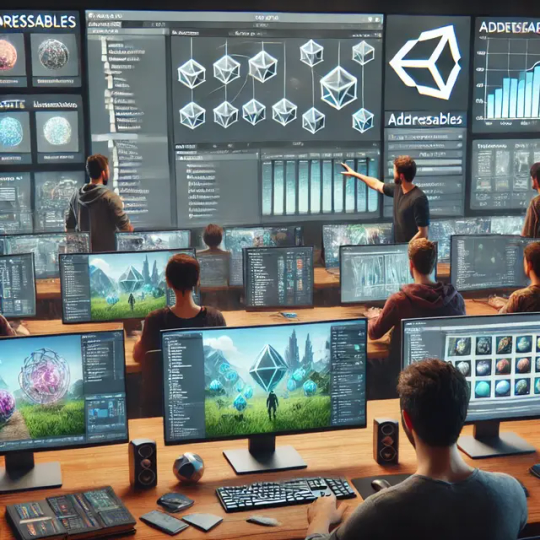
Lighting is one of the most critical yet often underestimated aspects of game development. It doesn't just affect visuals—it directly influences player experience, mood, and gameplay dynamics. In Unity, a game engine renowned for flexibility and scalability, lighting systems play a significant role in shaping how game designers build and structure the player journey. For studios leveraging Unity 3D game development services, understanding how lighting tools function—and how they influence design decisions—is key to crafting immersive, performant, and well-balanced games. Whether you’re starting a new title or looking to hire game designer professionals to fine-tune your gameplay feel, lighting systems should be a central part of your strategy.
Unity offers a variety of lighting solutions, including Baked Lighting, Real-Time Lighting, and Mixed Lighting, as well as advanced support through Universal Render Pipeline (URP) and High Definition Render Pipeline (HDRP). Each system comes with its own set of performance implications, visual fidelity advantages, and design constraints. Game designers must collaborate closely with lighting and technical artists to ensure that the lighting approach complements gameplay rather than hindering it. For example, in stealth-based games, carefully placed shadows and dim environments can define enemy line-of-sight mechanics. In puzzle games, dynamic lights can be used to indicate interactions or hint at solutions. These are deliberate design decisions, made in sync with the technical capabilities of Unity’s lighting systems.
In Unity’s Baked Lighting system, designers and developers create static lightmaps that don’t update during runtime. This is ideal for mobile or performance-sensitive platforms. However, it imposes design limitations—any mechanic requiring dynamic illumination or player-triggered lights must be carefully planned. For studios using Unity 3D game development services, balancing performance with aesthetic intent often begins at the lighting decision stage. Game designers must plan level layouts, player movement, and visual cues with an understanding that lighting will remain fixed throughout the experience unless real-time elements are introduced.
On the other hand, Real-Time Lighting allows light sources to update dynamically, enabling interactive shadows, day-night cycles, and real-time changes based on player behavior. This opens up a whole new set of possibilities for game designers. Imagine a horror game where the flashlight flickers based on player health, or an adventure game where sunlight changes puzzle logic based on time of day. These interactions depend on game designers working hand-in-hand with Unity developers to utilize the engine’s capabilities while maintaining frame rates and resource efficiency.
Mixed Lighting in Unity combines baked and real-time lighting, offering a middle ground between performance and interactivity. Designers often rely on this approach when they want certain static areas to remain optimized, while keeping characters or objects reactive to dynamic light. It’s an ideal system for games with both ambient storytelling and real-time gameplay feedback—commonly seen in action-adventure titles or exploration-based games.
In more advanced use cases, Unity’s HDRP supports physically based lighting, volumetrics, light layering, and ray tracing. Here, game designers have even more control over realism and ambiance. However, the decisions become more complex. Designers must now consider how realistic lighting will affect gameplay readability, contrast, and visibility. Too much realism may make essential elements blend into the environment, frustrating players. This is where professional insight becomes invaluable. If your studio aims to push visual boundaries, it’s crucial to hire game designer experts who can design gameplay around the lighting system—not just within it.
Unity’s lighting also extends to indirect gameplay signals. Designers use light intensity, color, and placement to draw attention to objectives, indicate danger, or guide exploration. Subtle lighting differences often replace traditional UI in minimalist games. For example, a warm glow might highlight a safe zone, while a cold blue tone may imply an area of uncertainty or challenge. These nuanced touches are crafted by designers who understand both the emotional psychology of lighting and the technical possibilities of Unity’s rendering system.
Moreover, lighting directly impacts performance—especially on mobile or VR platforms. Designers must evaluate the impact of lighting decisions on load times, draw calls, and GPU strain. Professional Unity 3D game development services often include a collaborative effort where designers, artists, and engineers run lighting tests alongside gameplay evaluations to ensure the game feels smooth and responsive across target devices.
In conclusion, Unity’s lighting systems are not just visual tools—they’re gameplay tools. They influence player behavior, shape emotional tone, and provide critical feedback within the game world. Whether you’re building a stylized 2D platformer or a photorealistic 3D simulation, integrating lighting into your design logic is vital. To maximize the power of Unity’s lighting features, studios must hire game designer professionals who are not only creative but technically fluent in the engine’s capabilities. With the right team and approach, lighting becomes more than just an aesthetic choice—it becomes a central pillar of game design itself.
0 notes